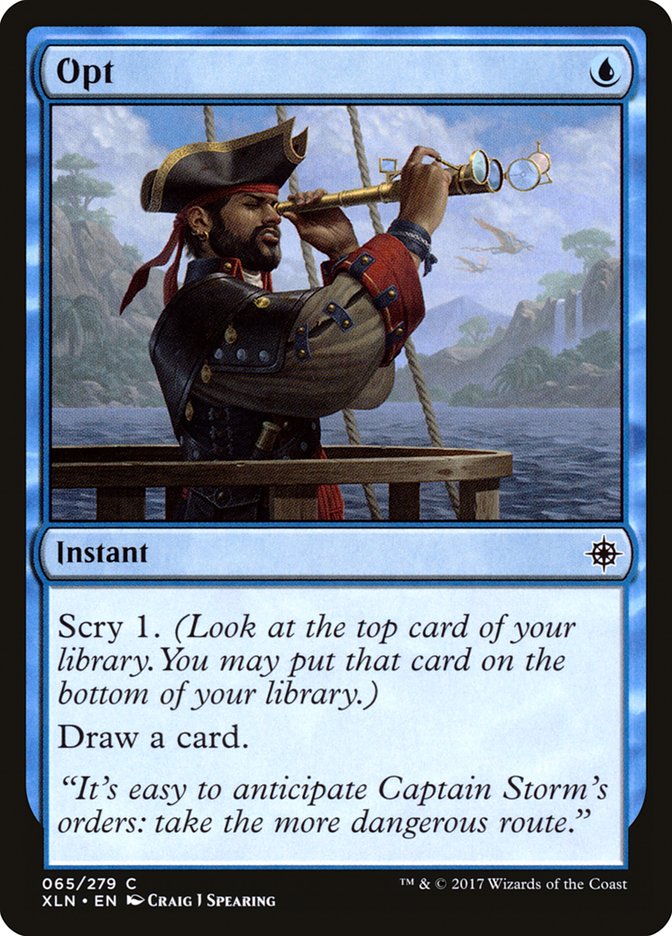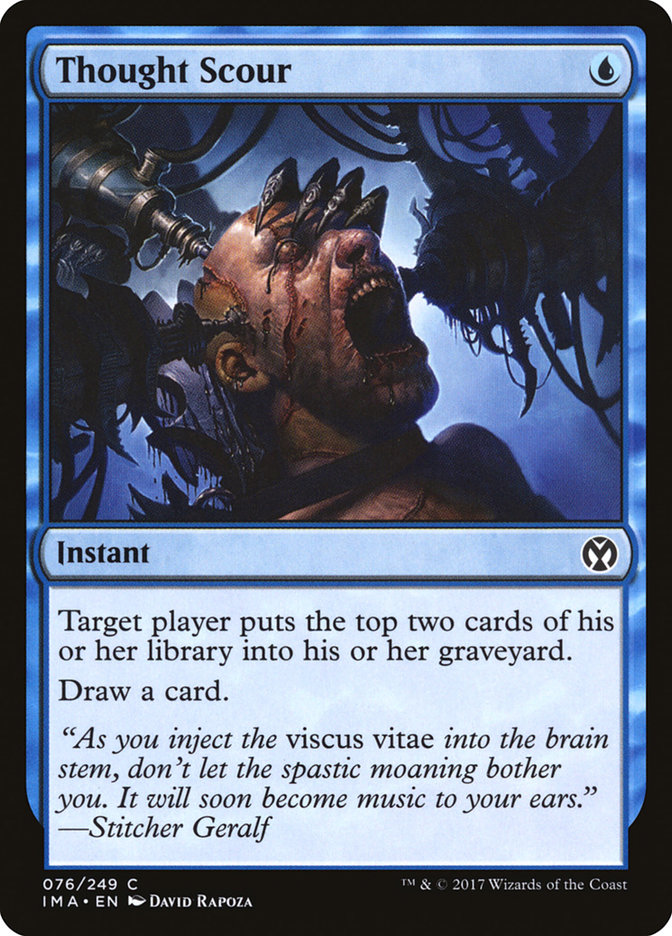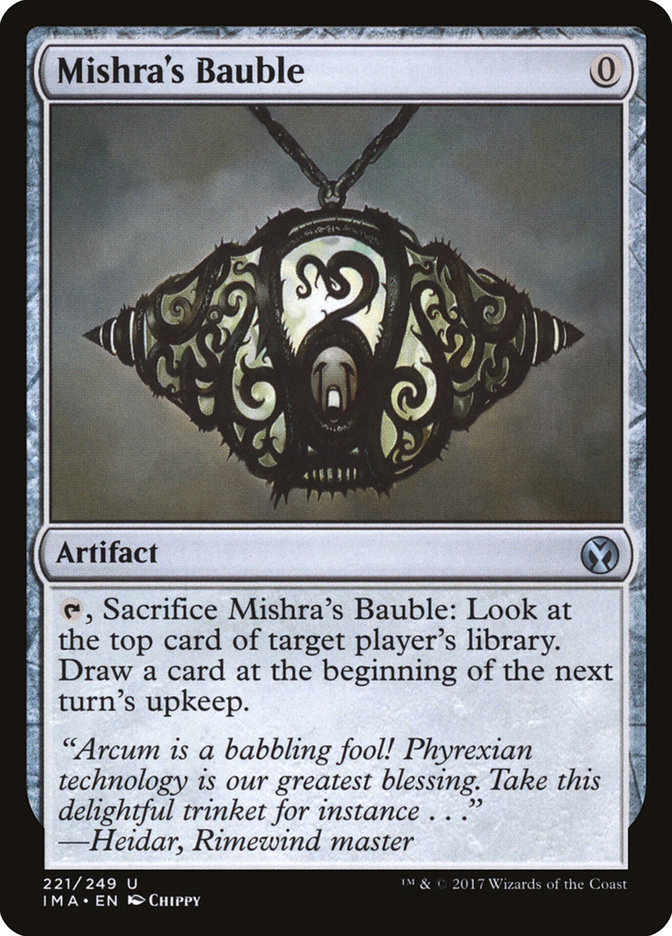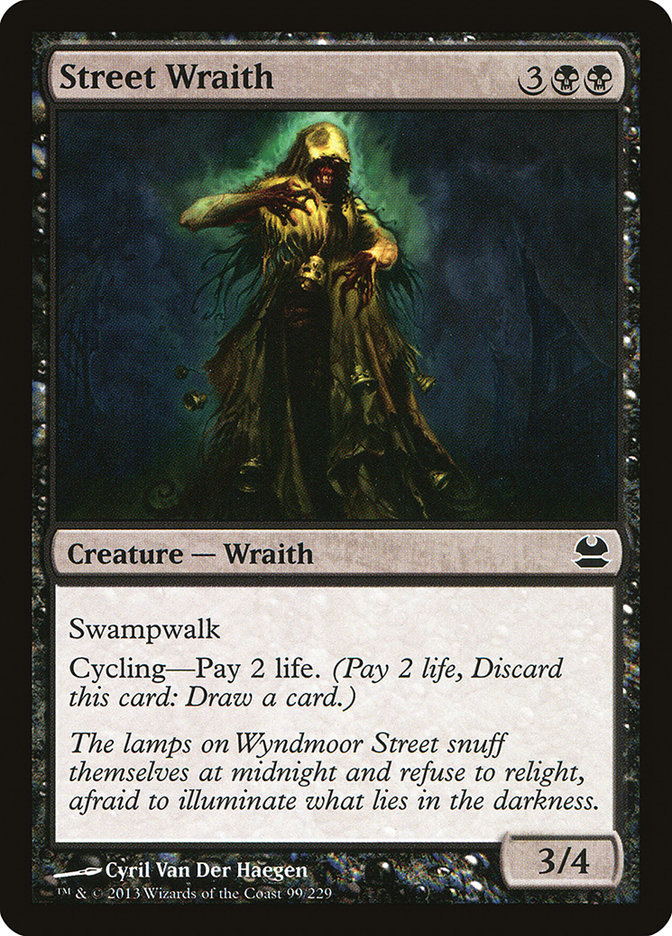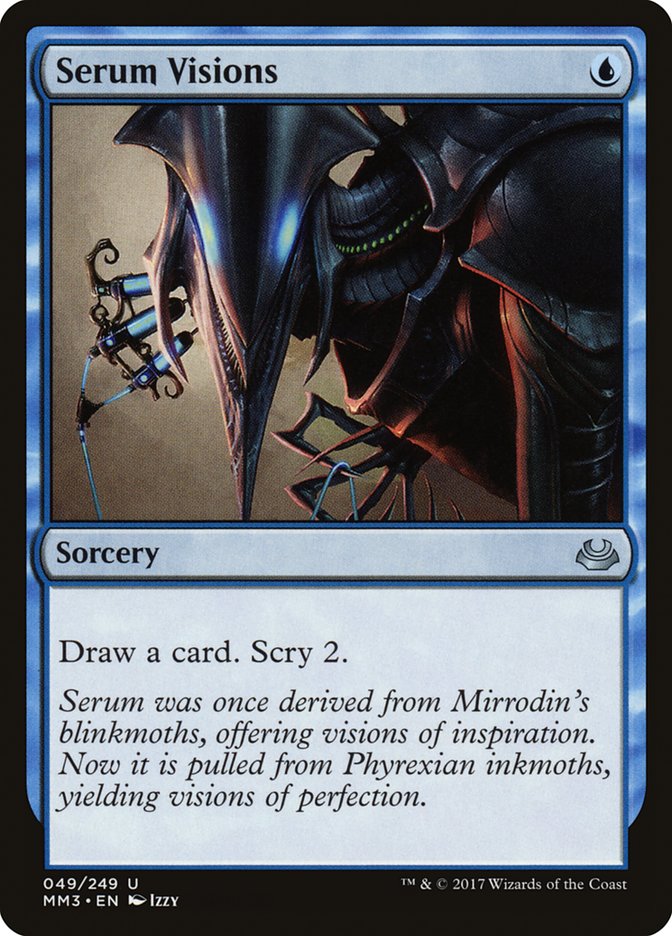Modern has been put at the forefront in Magic over recent years, and who
doesn’t love casting blue cards? Cantripping in Modern is something I see
screwed up all the time. I’ve seen countless people do things like Serum
Visions before they use a fetchland, or Thought Scour their opponent to get
their known top card because they did it in the wrong order. I remember
back in the golden days of Legacy reading numerous articles about how to
cast Brainstorm. Understanding when you should hold it, when you need to
fire it off, what phase to cast it or not, and so much more. So it got me
thinking…
How come no one has ever done this for Modern?
Sure, cards like Serum Visions, Opt, and Thought Scour have a lot less play
to them than Brainstorm, but there’s still plenty of things we need to wrap
our heads around. The cards are still Modern staples and are among the most
played cards in the format. I like to believe that my prowess in Legacy is
directly correlated to my mastering of how to properly sequence my
cantrips. I certainly think it’s attributed to my recent success in Modern
as well.
The point of this article will be to shed some light on how to correctly
sequence your one-mana blue cyclers. I’ll be doing this by presenting some
different gamestates involving all the different cantrips in Modern. Laying
the situations out in front of you will help you recognize these patterns
when you’re faced with them in gameplay. It also will help you understand
the logic behind the ordering of the spells. Hopefully by the end of this,
you’ll understand the sequences and be able to recognize patterns with your
cantrips to help you become a Modern master.
Modern’s newest cantrip and one most of us probably have the least
experience playing with, Opt is best when it comes to finding specific
cards on turns you need them. Opt gets better as the game progresses
because of this, and is often the best cantrip you can topdeck in a late
game situation. It also plays beautifully with Snapcaster Mage and the
plethora of one mana instants that pair with it. It being instant speed is
certainly one of the biggest draws to the card, but Opt is worse at
sculpting for multiple turns ahead since it only sees one card. A great
example of when Opt is best is when you are digging to a crucial removal or
counter spell that determines the outcome of the game. It obviously feels a
bit underwhelming when the card is just Reach Through Mists, but ignoring
that, I’ve been quite impressed with Opt in the decks I’ve played it in.
This one we should be familiar with. Thought Scour is best when you’re not
in need of anything specific and when fueling your graveyard for delve
cards or Snapcaster Mage. When I have a good mix of lands and spells and
don’t need anything immediately I think it’s right to lead on Thought
Scour, as drawing random cards will give you a more informed decision on
your later cantrips. It doesn’t look like a super flashy card, but it plays
a very specific role in the decks it’s in. When you’re using it as “Dark
Ritual, draw a card” for delve spells the card just feels busted.
A card that doesn’t see quite as much play as its blue counterparts,
Mishra’s Bauble still has quite a lot of play to it. You can use it to
effectively scry with your fetchlands or scry with Thought Scour if you’re
playing the card in Grixis Death’s Shadow. While it has some nice synergies
with other cards in various decks, it’s also quite difficult to use on its
own, as timing your Bauble cracks can be a tricky thing. Most of the time
you’ll find yourself cracking it main phase targeting yourself, but
sometimes you’ll want to target your opponent with it to help inform
something like a discard spell. Often it’s also correct to crack it on
their turn so that the card you draw is also hidden from discard spells.
I’ve had an interesting relationship with Street Wraith. It’s completely
busted and certainly not a normal Magic card, but Street Wraith has a lot
of amazing uses. In Grixis Death’s Shadow, it plays an important role for
fueling delve and paying life to increase the power of the deck’s namesake
card, but it also has amazing synergy with cards like Mishra’s Bauble and
Serum Visions; essentially turning these cards into
build-your-own-Preordain. On top of all of that, it also makes your deck
operate like it only plays 56 cards, allowing you to play less lands.
Certainly the best of the bunch and has the most versatility, Serum Visions
is great at finding you a land early, a removal spell for the mid game, or
setting up for turns down the road. The card is best at sculpting your game
plan as well as finding a vital piece of your game plan. It is without a
doubt a staple of Modern and one of the best cards of the format.
Scenario 1: Crack your fetchland before you Serum Visions
This is essentially “day 1” of Serum Visions 101, but something I felt was
important to talk about. You always want to crack your fetchlands before
Serum Visions so that you don’t have to shuffle away any of the cards
you’ve scryed to the top. A situation is when you’re on the draw game 1
playing U/R Through the Breach and your opponent plays Stomping Ground
untapped to suspend Search for Tomorrow. So right from the get go we know
what we’re up against and know what we need to find. Our hand after our
draw step is


Here we’re cracking our Scalding Tarn for an untapped Steam Vents and
casting Serum Visions looking for combo pieces or more counter spells.
Scenario 2: Holding your Serum Visons
You’re playing Jeskai and you’re on the play game 1 in the dark. Your
opener is:


After reading the past situation, instincts probably tell us to crack fetch
and Serum Visions. The problem with this line is you really aren’t sure
what you’re looking for at this stage in the game. Without knowing what the
opponent is on, we can’t make an educated guess on what to scry into. This
is a scenario where I’d just play Scalding Tarn and pass the turn with the
plan of fetching a tapped land, assuming you don’t have to Lightning Bolt
anything. You should be able to figure out what you need based on your
opponent’s turn one start if you’re well-versed in Modern.
Scenario 3: Properly ordering your cantrips.
You’re playing Grixis Death’s Shadow and you’re dealt an opener of:


This is another instance where we don’t want to Serum Visions on turn one.
Not only do we not know the match up to help us know what’s good, but we
also aren’t in desperate need for anything right now either. We’d rather
pass the turn so we can react to our opponent and then know what we need to
find. Assuming we don’t need to Fatal Push here, I’d start with Thought
Scour since we want to save both Opt and Serum Visions. On top of that, we
don’t want to scry before casting Thought Scour since you always want to
mill yourself. Then once you untap I’d go second fetchland into Opt and/or
Serum Visions. This will both see the most cards and make sure you aren’t
cantripping into cards you know you already want.
Scenario 4: How to play with Sleight of Hand
You’re playing Ad Nauseam and your opening hand is:


This is an instance where we want to prioritize the Sleight of Hand for
similar reasons to the previous scenario where we don’t want to Sleight
into cards we’ve already scryed into. On top of this we want to maximize
our chances in finding a turn one Lotus Bloom by seeing two cards.
Scenario 5: What to do when you need lands
We’re back to playing Grixis Shadow and our opening card hand is:


The initial instinct is that we desperately need lands, right? This would
lead us down the roads of Street Wraith, fetch, and then Serum Visions
digging for our second land. While I likely would have made this exact
sequence just a few months ago, I have been enlightened to greater paths. I
believe here I would just fetch for Watery Grave and cast Inquisition of
Kozilek. Firing off a discard spell on turn one versus turn two in Modern
can be everything in a game as there are so many crucial plays you need to
take that turn. What really allows us to make this play though is the
powerful synergy between Serum Visions and Street Wraith. My Grixis blood
brother, Korey McDuffie, refers to this as the Modern Brainstorm. Holding
your Street Wraiths can be a beautiful things folks, and it’s incredible at
turning your Serum Visions into a build your own Preordain when in need of
a specific card.
Scenario 6: How to scry with Mishra’s Bauble
You’re playing Five-Color Death’s Shadow and have a fetchland, Mishra’s
Bauble, and Street Wraith in hand. Here is a situation where we want to
effectively “scry” with our Mishra’s Bauble by looking at the top of our
deck before deciding to crack a fetchland. This way, if we see a card we
like, we can cycle into it with the Street Wraith or fetch first if we
don’t like it. This is the most common sequence of cantrips used in this
deck and something us Death’s Shadow players got used to doing back in the
days of the earlier versions of the deck.
Scenario 7: Slow down a bit
You’re playing Corey Burkhart’s Grixis Control deck and your hand is:

We scryed our card to the bottom. Our opponent led on Raging Ravine and
passed the turn. We then drew a Thought Scour, giving us even more options
to employ this turn. Most people here would almost certainly snap crack
their fetchland and start digging for lands. However, your opponent playing
a two-drop could be backbreaking with this hand. Also, the fact that they
led on a tapped land means they’re even more likely to have one.
This should have laid out many of the possible sequences you could imagine
facing with your cantrips in Modern. Whether you’re casting Street Wraith,
Mishra’s Bauble, Thought Scour, Opt, or Serum Visions this article should
have a scenario that relates or benefits you. Hopefully this will go a long
way into improving your Modern game.
Good luck casting your cantrips, my friends!


